What Does an Effective Grievance Mechanism Look Like?
This blog post was guest-written in collaboration with Labor Solutions.
At the Mekong Club, we carry out regular anonymous surveys of private sector professionals working within retail and manufacturing industries. One of the key questions we ask is ‘Are workers within the supply chain of your company able to easily report concerns about their employment conditions, in their own language?’.
In other words, are workers able to easily access appropriate grievance mechanisms?
Less than 50% of the respondents surveyed in 2021 answered ‘Yes.’ But over 70% of respondents claim to have a modern slavery policy in place; which by definition should include grievance mechanisms. Lack of access to worker grievance is a glaring example of policy not being supported by tangible action on the ground.
Consumers, investors and shareholders are now expecting companies to support social sustainability policies with action. A grievance mechanism can help, and is understood as a formal complaint process that workers can use when a business’ activities negatively impact them. Grievance reporting enables companies to validate and monitor the policies they construct. Companies with high engagement levels make two and a half times more in revenue than their competitors with low engagement levels. Yet, worldwide, only 13% of employees are engaged.
Increasingly, grievance mechanisms are being required under mandatory human rights due diligence laws (mHRDD) across in the EU, Canada and the US. The German Supply Chain Due Diligence Act notably mandates all companies with more than 3,000 employees that are either based in Germany or German branches of foreign companies must have a grievance mechanism in place by January 1st, 2023. Grievance is a rare area of the anti-slavery strategy that is measurable and works to scale if done correctly, generating clear ESG-friendly data points and case studies; gold-dust in the murky world of sustainability reporting.
Scrutiny should be applied to those who claim they have no grievances, as grievances can be found even in the most respectful workplaces. While no grievances may look great, it often means that the feedback collection systems are faulty or workers are fearful of reporting grievances.
Both the correct worker feedback collection system and the right response process are essential to deliver returns and impact worker engagement. Effective worker voice systems are composed of an ongoing cycle of decisions and actions that all impact one another.

We asked our grievance partner Labor Solutions to define “effective grievance mechanisms” and got a breakdown of what success looks like in practice for all actors involved:
FROM THE WORKER’S PERSPECTIVE
ANONYMOUS: Our team works with often factories and hears management sing praises about their worker feedback system:
“Our workers come into our offices and tell us how they feel every day. We address their issues on the spot. We have a great relationship with them.”
This alone is not an effective worker feedback system. While it open dialogue with employees is great for an open door policy, when workers are unable to log their grievances, some will not come forward and serious issues may not be addressed.
KNOWN: Workers need to know about the system. It needs to be promoted consistently and openly. It should be discussed as part of the onboarding process, announced during team meetings, and posted in public places. If workers don’t know about the system, they won’t use it.
ACCESSIBLE: Whatever system you choose needs to be accessible to your workforce. If workers don’t have email addresses or mobile phone access, an email or mobile phone system would obviously be inaccessible.
FROM THE EMPLOYER’S PERSPECTIVE
CONFIDENTIAL: Employers are more likely to seek worker feedback if they know the feedback is confidential and not shared with unions, their clients, or others. We have seen that many third-party helplines have low utilization, often around 2%, while those that are run by employers directly are much higher, around 25%. This also means that small misunderstandings can be kept from ballooning into huge complaints because management can address worker concerns quickly and directly.
TWO-WAY COMMUNICATION: If an employer has no way to follow up with a worker on a complaint or question, it is unlikely that they will be able to find an effective solution. For example, if a worker drops a message in a grievance box that says, “My manager hit me,” there are a lot of additional questions that need to be asked—like “who is your manager?”, or “when did the incident occur?” If the employer isn’t able to have a two-way, anonymous conversation with the worker, they won’t get the information they need to make change. In addition, if they do solve the problem, they aren’t able to let the worker know how it was solved, leaving workers feeling like their questions went unanswered.
EASILY AGGREGATED DATA: A system which collects data, aggregates and organizes it, allows top management to identify and follow trends and decide when executive action is needed. It also helps with investigations. If the same problem is being reported consistently, it helps investigators uncover the root of problems faster.

INVESTIGATION AND RESPONSE PROCESS
EFFICIENT: Efficiency is key to ensuring that a concern is properly addressed, and that both parties stay engaged and committed to resolving the issue at hand. Efficiency in responses is characterized by its directness, timeliness, and clarity. Even if you don’t have a resolution to the issue, or think the feedback is impractical, it is still important to respond directly, emphatically, and promptly. Across all of our clients at Labor Solutions, we see a direct correlation between the speed of response and the utilization rate—the faster the employer works to respond to the worker, the more likely the worker will use the system. A message like this is fine to start: “Thank you, we are investigating and will get back to you as soon as possible.”
EXPLAINED: An efficient solution is great, but is lacking if only one party understands it. Management needs to make clear what the proposed resolution, or at least response, is and what it will look like for the worker. If management does not plan to resolve the issue, there should be a response explaining why. This ensures that at the least the worker feels heard and will hopefully continue to use the feedback system.
PROMPTS ACTION: A quality resolution is only as good as the action it prompts. Feedback systems that create win-win outcomes are dependent upon the resolution being meaningfully and continuously carried out throughout the workplace. This allows a worker to see that their feedback spurred change, causing them to feel increased engagement and can consequently increase their productivity. It is important to consider if feedback should prompt review of internal procedures and processes in addition to reviewing the specific issue at hand. For example, if a worker is reporting abuse, in addition to addressing the specific claim, it is also important to determine if the abuse is just a singular event, or if it is systematic and widespread, indicating a need for procedures to be altered to prevent similar events in the future.
For a response process to be effective, it is important that the facility is not scared of punitive actions for issues brought to its attention. The facility needs to feel safe admitting there is a problem and asking for support from surrounding resources to solve that problem. Leadership and management should encourage open dialogue and improvement activities. Typically, punitive actions should take place only if the facility does not work to address issues brought to its attention.
Technology can be at the core of any good grievance system identifying cases of modern slavery, forced labor, and sexual and gender based violence and harassment (SGBVH), but it cannot act alone. With a healthy amount of scrutiny towards a lack of grievances and a proper system in place to address and respond to worker feedback, worker trust will naturally grow stronger. Ensuring that the feedback system in your workplace has the above attributes will create a space that allows management and workers to maintain that trust; therefore, fostering a safe and healthy workplace environment that promotes both wellness and productivity.
Authors: Elena Fanjul-Debnam, Sophie Zinser ,Phoebe Ewen
FAQ
-
What is a grievance mechanism?
-
How can ethical supply chains relate to effective grievance mechanisms?
-
Why is an effective grievance mechanism important in supply chain sustainability?
-
What ethical issues in the recruitment process can an effective grievance mechanism address?
-
How can a grievance mechanism help with supply chain transparency?

